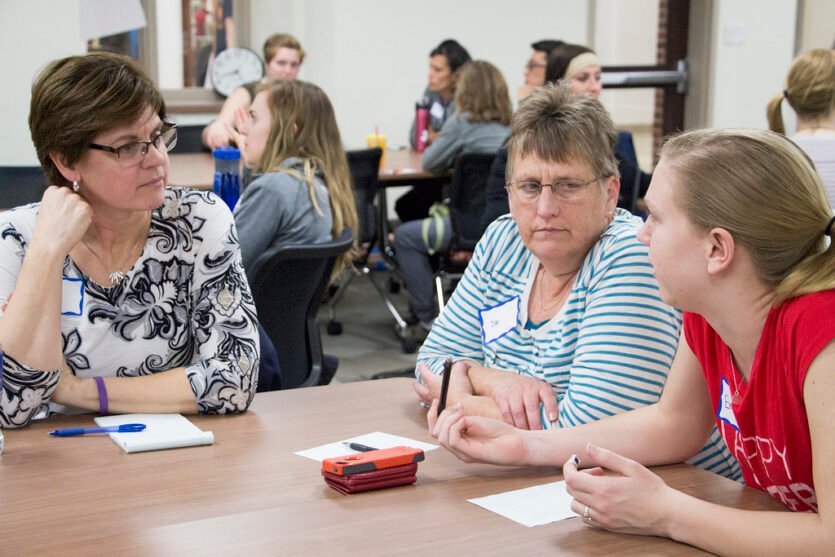Exploring Financial Assistance Programs for Senior Care
In recent years, the issue of senior care has garnered increasing attention due to demographic shifts towards an aging population in many parts of the world. As life expectancy rises and healthcare costs escalate, families and individuals are seeking ways to manage the financial burden associated with caring for elderly loved ones. This has led to a growing interest in understanding the availability and effectiveness of financial assistance programs tailored to senior care needs.
Delving into the Facets of Financial Assistance for Senior Care
Financial assistance programs for senior care encompass various facets, including government-funded initiatives, insurance coverage, and nonprofit organizations’ support. Medicare and Medicaid, two prominent programs in the United States, play significant roles in providing Centers for Medicare & Medicaid Services healthcare coverage for seniors, although their scope and eligibility criteria vary. Additionally, long-term care insurance policies offer another avenue for individuals to mitigate the costs of senior care services.
Understanding the complexities of these programs is crucial for individuals and families navigating the landscape of senior care. While some programs may offer comprehensive coverage, others may have limitations or gaps that require supplementary planning. For example, Medicare typically covers short-term skilled nursing care following a hospital stay but does not provide long-term custodial care. In contrast, Medicaid may cover long-term care services but requires individuals to meet strict income and asset eligibility criteria.
Exploring reputable sources can provide valuable insights into the nuances of financial assistance programs for senior care. The AARP offers comprehensive guides and resources on navigating Medicare and Medicaid, helping individuals make informed decisions about their healthcare coverage options. Additionally, the Centers for Medicare & Medicaid Services (CMS) website provides up-to-date information on program eligibility and benefits.
The implications of financial assistance programs for senior care extend beyond individual households to broader societal and industry contexts. By alleviating financial strain, these programs contribute to improved access to essential healthcare services for seniors, enhancing overall well-being and quality of life. However, challenges such as funding constraints, administrative complexities, and disparities in access persist, prompting ongoing debates and calls for policy reforms.
Challenges and Considerations
One of the primary challenges in the realm of financial assistance for senior care is the adequacy of coverage and affordability. Despite the existence of various programs, many seniors still face significant out-of-pocket expenses, particularly for long-term care services not covered by traditional insurance plans. This disparity underscores the need for comprehensive reform to ensure equitable access to quality care for all older adults.
Ethical considerations also come into play when discussing financial assistance for senior care, particularly regarding rationing of resources and prioritization of services.BenefitsCheckUp® Limited funding and competing demands within healthcare systems raise questions about how to allocate resources fairly while meeting the diverse needs of an aging population. These debates highlight the importance of balancing cost-effectiveness with ethical imperatives to uphold dignity and autonomy in care delivery.
Looking ahead, the future of financial assistance programs for senior care hinges on addressing these challenges and embracing innovative solutions. Emerging trends such as value-based care models and technology-enabled services hold promise for improving care delivery efficiency and affordability. However, addressing systemic issues such as workforce shortages and disparities in access will require concerted efforts from policymakers, healthcare providers, and community stakeholders.
Case Studies or Real-world Applications
One notable example of a successful financial assistance program for senior care is the Program of All-Inclusive Care for the Elderly (PACE). PACE provides comprehensive, community-based care to eligible seniors, integrating medical, social, and long-term care services to support aging in place. Research has shown that PACE participants AARP’s Guide to Medicare experience better health outcomes and higher satisfaction compared to traditional care models, demonstrating the effectiveness of holistic approaches to senior care.
Another real-world application worth exploring is the role of technology in facilitating access to financial assistance programs and coordinating care for seniors. Platforms like BenefitsCheckUp® help individuals identify potential benefits and resources based on their unique circumstances, streamlining the application process and reducing administrative burdens. Similarly, telehealth and remote monitoring technologies enable seniors to receive timely medical attention and support at home, reducing the need for costly institutional care National Institute on Aging.
While these examples showcase the potential of innovative approaches to senior care, they also highlight areas for improvement and further research. For instance, ensuring equitable access to technology-enabled services remains a challenge for marginalized communities facing digital divide issues. Additionally, evaluating the long-term sustainability and scalability of new care models is essential for widespread adoption and impact.
Conclusion
Financial assistance programs for senior care represent a critical component of addressing the evolving needs of an aging population. By exploring the diverse facets of these programs, we gain a deeper understanding of the complexities and challenges inherent in providing equitable and affordable care for older adults. While progress has been made in expanding access to essential services, ongoing debates and ethical considerations underscore the need for continuous innovation and policy reform.
As we navigate the complexities of senior care financing, it is essential to approach the topic with nuance and empathy, recognizing the diverse circumstances and preferences of older adults and their families. By fostering dialogue and collaboration across stakeholders, we can work towards a future where all seniors receive the support and dignity they deserve in their later years.
Q&A Section
1. What financial assistance programs are available for senior care?
- Medicare and Medicaid are two primary programs in the United States that offer healthcare coverage for seniors, although their coverage and eligibility criteria differ. Additionally, long-term care insurance policies and nonprofit organizations may provide support for specific services not covered by traditional insurance plans.
2. How do I know if I qualify for financial assistance for senior care?
- Eligibility criteria for financial assistance programs vary depending on factors such as income, assets, age, and health status. It’s essential to research specific program requirements and consult with a qualified financial advisor or social worker for personalized guidance.
3. Are there any alternative financing options for senior care?
- In addition to government-funded programs and insurance coverage, seniors and their families may explore alternative financing options such as reverse mortgages, annuities, and personal savings. Consulting with a financial planner can help assess the feasibility and suitability of these options based on individual circumstances.
4. How can I navigate the complexities of Medicare and Medicaid for senior care?
- Organizations like the AARP and the Centers for Medicare & Medicaid Services (CMS) provide resources and educational materials to help individuals understand their Medicare and Medicaid coverage options. Additionally, working with a Medicare counselor or insurance broker can provide personalized guidance and support.
5. What should I consider when planning for long-term care expenses?
- When planning for long-term care expenses, it’s essential to consider factors such as projected healthcare needs, potential cost of care services, available financial resources, and eligibility for government programs or insurance coverage. Developing a comprehensive financial plan with the help of a qualified advisor can help mitigate risks and ensure peace of mind.
For further exploration of this topic, readers can refer to the following resources:
- AARP’s Guide to Medicare: Link
- Centers for Medicare & Medicaid Services: Link
- BenefitsCheckUp®: Link
- National Institute on Aging: Link
If you or someone you know is in need of senior care and financial assistance, fill out our form, and a specialist will reach out to provide personalized support and guidance.
Need help? Let us know how we can match you.
Exploring the Facets of Assisted Living Costs
In recent years, the topic of assisted living costs has gained significant attention, reflecting the increasing aging population and the evolving landscape of healthcare services. Assisted living facilities provide a crucial service for elderly individuals who require assistance with daily tasks but do not need the intensive medical care provided in nursing homes. However, the affordability and accessibility of these facilities have become pressing concerns for many families, sparking debates about the best ways to finance senior care and ensure quality of life for aging loved ones.
According to a report by Genworth Financial, the average monthly cost of assisted living in the United States is around $4,000, with significant regional variations. Factors such as location, level of care needed, and amenities provided can all influence the overall cost. This highlights the complex financial considerations that families must navigate when planning for the care of elderly relatives.
Moreover, the rising cost of assisted living has raised questions about equity and social justice. Not everyone can afford these services, leading to disparities in access to quality care based on socioeconomic status. This issue is particularly salient given the growing income inequality and the financial strain faced by many middle-class families.
Another aspect to consider is the emotional and psychological impact of transitioning to assisted living. While these facilities offer support and companionship, the loss of independence and familiar surroundings can be challenging for some individuals. Balancing the need for care with the desire for autonomy is a delicate process that requires careful consideration by both families and caregivers.
Challenges and Considerations
One of the main challenges surrounding assisted living costs is the lack of comprehensive insurance coverage. Medicare typically does not cover long-term care services, leaving many families to rely on personal savings or Medicaid once their resources are depleted. This has led to calls for policy reforms to make senior care more affordable and sustainable for all Americans.
Ethical considerations also come into play when discussing assisted living costs. There is a fundamental question of societal responsibility: Should access to quality care be considered a basic human right, or is it ultimately the responsibility of individuals and their families to bear these costs? Finding a balance between personal responsibility and collective support is essential for addressing the needs of an aging population.
Looking ahead, the future of assisted living costs will likely be shaped by ongoing demographic shifts and healthcare reforms. As the baby boomer generation ages, there will be increased demand for senior care services, placing further strain on existing infrastructure and resources. Policymakers, healthcare providers, and communities must work together to develop sustainable solutions that ensure dignity and quality of life for older adults.
Case Studies or Real-world Applications
Consider the case of the Smith family, who are grappling with the decision of whether to move their aging parents into an assisted living facility. Mr. and Mrs. Smith require assistance with daily tasks such as bathing and meal preparation, but they are hesitant to leave their home of 50 years. After researching various facilities and consulting with financial advisors, the Smiths ultimately decide on a community that offers personalized care and recreational activities to promote social engagement.
In another scenario, a retirement community implements innovative cost-sharing models to make assisted living more affordable for residents. By pooling resources and leveraging community partnerships, the facility is able to offer a range of services at a lower cost, ensuring that seniors of all income levels can access the care they need.
These examples illustrate the practical implications of assisted living costs for families and communities. While there are certainly challenges to overcome, there are also opportunities for creative solutions and collaborative efforts to improve access to senior care.
Conclusion
In conclusion, the topic of assisted living costs is multifaceted and deeply intertwined with broader issues of aging, healthcare, and social equity. As the population continues to age, it is imperative that we address these challenges with compassion, foresight, and innovation. By fostering open dialogue and exploring innovative solutions, we can ensure that every individual has the opportunity to age with dignity and receive the care they deserve.
Q&A Section
- How much does assisted living typically cost?
- Assisted living costs vary depending on factors such as location, level of care needed, and amenities provided. On average, monthly costs can range from $2,500 to $6,000 or more.
- Does insurance cover assisted living expenses?
- Medicare typically does not cover long-term care services such as assisted living. However, some individuals may have long-term care insurance or qualify for Medicaid assistance.
- What are some alternatives to assisted living?
- Alternatives to assisted living include in-home care services, independent living communities, and continuing care retirement communities (CCRCs) that offer a range of housing and care options.
- How can families afford assisted living costs?
- Families can explore options such as personal savings, long-term care insurance, veterans benefits, and Medicaid assistance to help cover the cost of assisted living.
- What factors should I consider when choosing an assisted living facility?
- When choosing an assisted living facility, it’s important to consider factors such as location, cost, level of care provided, staff qualifications, amenities, and resident reviews.
For further reading on this topic, please explore the following resources:
- Genworth Cost of Care Survey
- Medicare.gov – Nursing home & other long-term care costs
- National Center for Assisted Living – FAQs
- AARP – Long-Term Care
If you or someone you know is in need of senior care, please fill out our form, and a specialist will reach out to assist you. Your loved one’s well-being is our top priority.
Need help? Let us know how we can match you.
Exploring the Facets of Assisted Living and Nursing Homes
In recent years, as populations age and healthcare systems evolve, the distinction between assisted living facilities and nursing homes has become increasingly significant. This topic holds relevance as families grapple with decisions regarding elder care, considering factors like cost, level of assistance needed, and quality of life for their loved ones. The debate surrounding these options often hinges on understanding the nuanced differences between them and determining which best suits the individual’s needs.
Assisted Living vs. Nursing Homes: Understanding the Differences
Assisted living facilities are designed for seniors who require some assistance with daily activities but still wish to maintain independence. These facilities offer services such as meal preparation, housekeeping, medication management, and transportation, while also providing social activities and communal living spaces. On the other hand, nursing homes, also known as skilled nursing facilities, cater to individuals with more complex medical needs who require round-the-clock care from licensed healthcare professionals. This may include assistance with bathing, dressing, mobility, and medical treatments.
Implications on Society and Individuals
The choice between assisted living and nursing homes carries significant implications for both individuals and society at large. For seniors, it impacts their quality of life, autonomy, and access to necessary care. Families must consider financial implications, as nursing home care tends to be more expensive due to the higher level of medical supervision. Additionally, societal factors such as healthcare policies and workforce shortages influence the availability and quality of these options.
For more in-depth information, readers can explore resources from authoritative sources such as:
- AARP – Assisted Living vs. Nursing Homes
- Mayo Clinic – Choosing Between Assisted Living and Nursing Homes
- National Institute on Aging – Long-Term Care Options
- Centers for Medicare & Medicaid Services – Nursing Home Compare
Challenges and Considerations
One of the main challenges surrounding this topic is the ethical dilemma of balancing autonomy with safety. While assisted living promotes independence, there may come a point where a senior’s needs exceed what these facilities can provide, necessitating a transition to a nursing home. Additionally, there are concerns about disparities in care quality and regulatory oversight between different facilities, highlighting the need for standardized measures and accountability.
Future Developments and Unresolved Questions
Looking ahead, the aging population will continue to drive innovation in senior care models. This includes advancements in technology to support aging in place and the integration of holistic approaches to wellness. However, unresolved questions remain regarding equitable access to quality care, workforce sustainability, and the financial sustainability of long-term care systems.
Case Studies or Real-world Applications
Consider the case of Mr. and Mrs. Smith, a retired couple facing health challenges as they age. Initially, they opt for assisted living, enjoying the independence and social engagement it offers. However, as Mrs. Smith’s dementia progresses, they must reevaluate their options. After careful consideration, they transition to a nursing home where Mrs. Smith can receive the specialized care she requires, while Mr. Smith continues to benefit from the support of the facility.
Conclusion
In conclusion, the decision between assisted living and nursing homes is complex and multifaceted, requiring careful consideration of individual needs, preferences, and circumstances. By understanding the distinctions between these options and considering the broader societal implications, families can make informed decisions that prioritize the well-being of their loved ones. As the landscape of senior care continues to evolve, ongoing dialogue and research are essential to ensure accessible, high-quality care for all.
Q&A Section
- What factors should I consider when choosing between assisted living and a nursing home?
- Factors to consider include level of assistance needed, medical requirements, cost, location, and amenities.
- Eldercare Locator – Assisted Living vs. Nursing Homes
- How do I know if my loved one needs assisted living or a nursing home?
- Assess their ability to perform daily activities, medical needs, cognitive functioning, and safety at home.
- Alzheimer’s Association – Care Options
- What is the average cost difference between assisted living and nursing home care?
- Assisted living costs vary widely but are generally lower than nursing home care, which can exceed $8,000 per month.
- Genworth – Cost of Care Survey
- Are there government programs that help cover the cost of assisted living or nursing home care?
- Some Medicaid programs may cover long-term care costs, but eligibility criteria vary by state.
- Medicaid.gov – Long-Term Services & Supports
- How can I ensure the quality of care in assisted living or nursing homes?
- Research facility ratings, visit in person, ask about staff training and ratios, and speak with current residents and their families.
- Centers for Medicare & Medicaid Services – Nursing Home Compare
For further assistance or personalized guidance on senior care options, fill out our form, and a specialist will reach out to you.
[Call to Action: Fill out our form for personalized senior care assistance]
Need help? Let us know how we can match you.
Choosing the Right Senior Care Facility: Navigating a Crucial Decision
In an aging society, the decision of selecting the appropriate senior care facility has become increasingly pertinent. With a growing population of seniors, coupled with changing family structures and busy lifestyles, the demand for senior care options is at an all-time high. Families often grapple with complex considerations, ranging from the level of care required to financial constraints and personal preferences. This article aims to explore the multifaceted nature of this decision-making process, shedding light on various aspects, challenges, real-world applications, and potential future developments.
Exploring the Facets of Senior Care Facility Selection
When considering senior care facilities, several crucial aspects come into play. Firstly, the type of care offered, whether it’s independent living, assisted living, memory care, or skilled nursing, must align with the individual’s needs. Factors such as location, amenities, staff qualifications, and community atmosphere also heavily influence the decision-making process.
According to the AARP, nearly 90% of seniors prefer to age in their own homes. However, for those who require round-the-clock care or specialized medical attention, transitioning to a senior care facility may become a necessity.
The rise of technology in senior care, including remote monitoring systems and telemedicine, presents both opportunities and challenges. While such innovations enhance the quality of care and promote independence, they also raise concerns regarding privacy and data security.
Furthermore, the COVID-19 pandemic has highlighted the importance of infection control measures within senior care facilities. Families now place greater emphasis on safety protocols and pandemic preparedness when evaluating potential options.
As society continues to age, the senior care industry faces the challenge of meeting diverse and evolving needs. From cultural competency to LGBTQ+ inclusivity, facilities must adapt to ensure equitable access to care for all seniors.
Challenges and Considerations
One of the main challenges in senior care facility selection is balancing affordability with quality. Long-term care can be financially burdensome, especially for families without adequate savings or insurance coverage. Medicaid and veterans’ benefits can provide assistance, but navigating eligibility criteria can be complex and time-consuming.
Ethical considerations also loom large in this domain. Issues such as ageism, informed consent, and end-of-life care provoke debate within both the healthcare and legal spheres. Moreover, the concept of “aging in place” versus institutionalized care raises questions about autonomy and independence for seniors.
Recent studies suggest that the rise of alternative care models, such as home-based care and co-housing communities, may revolutionize the senior care landscape. However, these models also pose regulatory and logistical challenges, requiring policymakers to reassess existing frameworks.
As the silver tsunami looms, healthcare systems worldwide must prepare for unprecedented demand. From workforce shortages to infrastructure investments, addressing the needs of aging populations requires proactive planning and collaboration across sectors.
Case Studies or Real-world Applications
Consider the case of Mrs. Smith, an 82-year-old widow living with early-stage dementia. Her family explores various senior care options, ultimately opting for a memory care facility with specialized programming tailored to her needs. While initially hesitant about the transition, Mrs. Smith thrives in her new environment, forming meaningful connections with staff and fellow residents.
In another scenario, Mr. and Mrs. Johnson, both in their late 70s, choose to age in place with the support of a home care agency. With the help of caregivers, they maintain their independence while receiving assistance with daily tasks and medical management. However, as their care needs evolve, they may reconsider their options and explore alternative arrangements.
These case studies illustrate the diverse pathways available within the senior care continuum, highlighting the importance of personalized decision-making and ongoing reassessment.
Conclusion
Selecting the right senior care facility is a multifaceted process influenced by a myriad of factors, from individual preferences to societal trends. As families navigate this complex terrain, it’s essential to weigh the pros and cons of each option carefully. By fostering open dialogue and staying informed about emerging developments in senior care, we can better support the well-being of our aging population.
Q&A Section
- How do I know if my loved one needs senior care?
- Assessing the need for senior care involves evaluating factors such as mobility, cognitive function, and safety at home. Consultation with healthcare professionals can provide valuable insights and guidance.
- Further reading: Aging in Place: Growing Old at Home
- What are the different types of senior care facilities available?
- Senior care options range from independent living communities to skilled nursing facilities, each offering varying levels of care and support. Understanding the differences between these options is crucial in making an informed decision.
- Further reading: Types of Senior Housing
- How can I afford senior care for my loved one?
- Financing long-term care can be challenging, but options such as long-term care insurance, Medicaid, and veterans’ benefits may help cover costs. It’s essential to explore all available resources and plan accordingly.
- Further reading: Paying for Senior Care
- What should I look for when visiting a senior care facility?
- During facility tours, pay attention to cleanliness, staff-resident interactions, safety measures, and available amenities. Don’t hesitate to ask questions about staffing ratios, activity programming, and meal options.
- Further reading: Choosing a Nursing Home or Assisted Living Facility
- How can I ensure my loved one receives quality care in a senior care facility?
- Regular communication with facility staff, attending care plan meetings, and advocating for your loved one’s needs are essential for ensuring quality care. Monitoring the facility’s compliance with regulations and addressing any concerns promptly can also safeguard residents’ well-being.
- Further reading: How to Advocate for Your Loved One in Long-Term Care
As you navigate the process of choosing a senior care facility, remember that you’re not alone. Seek support from healthcare professionals, social workers, and community resources to make informed decisions that prioritize the health and happiness of your loved ones.
Call to action: If you or someone you know is in need of senior care, fill out our form, and a specialist will reach out to assist you.
Need help? Let us know how we can match you.
Exploring the Facets of Elderly Care Needs
In recent years, the issue of recognizing when an elderly person requires assisted living has gained significant attention. As demographics shift towards an aging population globally, the challenges of providing adequate care and support for older adults become more pronounced. This topic is relevant not only on a personal level, affecting families and individuals making difficult decisions, but also on a societal level, as it impacts healthcare systems, housing, and social services.
Various signs indicate that an elderly person may require assisted living. These signs can range from physical limitations to cognitive decline and social isolation. Understanding these indicators is crucial for ensuring that seniors receive the support they need to maintain a good quality of life. However, the topic is not without controversy, as different cultural norms, familial expectations, and financial considerations can influence perceptions of when assisted living is necessary.
Signs of Need for Assisted Living
- Physical Limitations: Difficulty with activities of daily living such as bathing, dressing, and meal preparation can signal a need for assistance.
- Cognitive Decline: Memory loss, confusion, and difficulty making decisions may indicate the need for supervised care.
- Social Isolation: Withdrawal from social activities, loss of interest in hobbies, and limited interaction with others can lead to loneliness and depression, suggesting the need for a supportive community.
Understanding these signs and their implications is essential for caregivers, healthcare professionals, and policymakers alike. Recognizing when assisted living is necessary can improve the quality of life for seniors and alleviate stress on families.
Challenges and Considerations
The decision to transition an elderly loved one to assisted living often comes with emotional and practical challenges. Families may struggle with guilt, uncertainty, and disagreements about the best course of action. Ethical considerations arise regarding autonomy, dignity, and the balance between safety and independence. Additionally, access to affordable and high-quality care services remains a concern for many seniors and their families.
As society grapples with these challenges, ongoing research and dialogue are essential to inform policy decisions and best practices in elderly care. Future developments may involve innovative technologies, alternative care models, and community-based support networks.
Case Studies or Real-world Applications
Consider the case of Mrs. Smith, an 80-year-old widow living alone. Recently, her family noticed that she was forgetting to take her medication and struggling to maintain her home. After discussing their concerns with her doctor, they decided to explore assisted living options. While Mrs. Smith initially resisted the idea, she ultimately found comfort and companionship in her new community, leading to improved overall well-being.
In another scenario, Mr. Johnson, a retired veteran, was hesitant to leave his home despite increasing mobility issues. With the help of a home care agency, he was able to receive the support he needed to age in place safely while maintaining his independence.
These examples highlight the diverse needs and preferences of seniors and the importance of personalized care solutions.
Conclusion
Recognizing the signs that an elderly person needs assisted living is a complex and multifaceted issue. It requires careful consideration of physical, cognitive, and social factors, as well as respect for individual autonomy and dignity. As our understanding of aging evolves and society continues to adapt, ongoing dialogue and collaboration are essential to ensure that seniors receive the support and care they deserve.
Q&A Section
- How do I know if my elderly loved one needs assisted living?
- Look for signs such as difficulty with daily tasks, cognitive decline, and social isolation. Consult with their healthcare provider for guidance.
- Additional Resources: AARP – Signs It’s Time for Assisted Living
- What are the different types of assisted living facilities?
- Assisted living facilities vary in services and amenities, ranging from basic assistance with daily tasks to specialized memory care for individuals with dementia.
- Additional Resources: National Institute on Aging – Types of Assisted Living Facilities
- How much does assisted living cost?
- Costs can vary widely depending on location, level of care needed, and facility amenities. It’s essential to research and compare options to find the best fit for your budget.
- Additional Resources: Genworth – Cost of Care Survey
- What support services are available for caregivers of elderly individuals?
- Caregiver support groups, respite care services, and educational resources can provide valuable assistance and guidance for caregivers.
- Additional Resources: Family Caregiver Alliance – Support for Caregivers
- How can I talk to my elderly parent about transitioning to assisted living?
- Approach the conversation with empathy, honesty, and respect for their autonomy. Listen to their concerns and involve them in the decision-making process as much as possible.
- Additional Resources: Alzheimer’s Association – Tips for Talking About Assisted Living
If you or someone you know is in need of senior care, please fill out our form, and a specialist will reach out to assist you.
Need help? Let us know how we can match you.
Approaching the Conversation: Talking to Parents About Senior Care
Discussing senior care with aging parents can be a sensitive and challenging topic for many families. As our loved ones grow older, their needs may change, and it becomes essential to have open and honest conversations about their future care arrangements. However, broaching this subject can be fraught with emotions and uncertainties. In recent years, this topic has gained attention as the baby boomer generation ages, leading to increased awareness of the importance of planning for senior care and support.
Exploring the Facets of the Subject
Delving into the various aspects of talking to parents about senior care involves considering factors such as timing, communication strategies, and understanding individual preferences and concerns. Reputable sources such as the Alzheimer’s Association and AARP offer valuable insights and practical tips for initiating and navigating these conversations.
These discussions have significant implications for both individuals and society. On an individual level, they can impact family dynamics, relationships, and the emotional well-being of both parents and adult children. Societally, the aging population presents challenges and opportunities for healthcare systems, social services, and policymakers to ensure the availability and affordability of quality senior care options.
Challenges and Considerations
One of the main challenges surrounding talking to parents about senior care is the fear of upsetting or offending them. Many elderly individuals may resist discussing their care needs due to concerns about loss of independence or burdening their loved ones. Additionally, adult children may feel overwhelmed or guilty about broaching this topic, fearing that it may be perceived as a lack of respect or an attempt to impose decisions on their parents.
Ethical considerations also come into play, as families grapple with questions about autonomy, dignity, and the balance between safety and independence. Furthermore, navigating cultural and generational differences in attitudes towards aging and caregiving adds another layer of complexity to these conversations.
Looking ahead, there is a need for continued education, support, and resources to facilitate open and constructive dialogue between generations about senior care. Future developments may include advances in technology, changes in healthcare policies, and evolving social norms that shape how families approach these discussions.
Case Studies or Real-world Applications
Consider the case of the Rodriguez family, who struggled to talk to their aging parents about moving to an assisted living facility. Through open communication, empathy, and reassurance, the Rodriguez siblings were able to address their parents’ concerns and find a solution that met everyone’s needs.
In another scenario, a senior couple, the Smiths, proactively initiated conversations with their adult children about their long-term care preferences. By involving their children in the decision-making process and discussing their values and priorities, the Smiths were able to create a comprehensive care plan that respected their wishes and provided peace of mind for their family.
These examples illustrate the importance of communication, empathy, and collaboration in navigating discussions about senior care within families.
Conclusion
In conclusion, talking to parents about senior care is a multifaceted and emotionally charged process that requires empathy, patience, and understanding. While there are challenges and uncertainties, these conversations are essential for ensuring that elderly individuals receive the support and care they need to age with dignity and autonomy. As society continues to evolve, so too will our approach to senior care discussions, reflecting changing attitudes, policies, and technologies.
Q&A Section
- How do I start the conversation about senior care with my parents?
- Begin by expressing your concerns and intentions in a gentle and non-confrontational manner. Choose a time when everyone is relaxed and receptive to discussing important matters.
- What if my parents are resistant to discussing senior care?
- Respect their feelings and give them time to process the information. Be patient and reassure them that you are there to support and assist them in making decisions about their future care.
- What are some signs that my parents may need additional care or support?
- Look for changes in physical or cognitive functioning, difficulty managing daily tasks, neglecting personal hygiene, social withdrawal, or unexplained bruises or injuries.
- How can I involve my siblings or other family members in the conversation?
- Encourage open communication and collaboration among family members. Schedule a family meeting to discuss concerns, share information, and brainstorm potential solutions together.
- Are there resources available to help facilitate discussions about senior care?
- Yes, there are various resources, including online guides, support groups, and professional counselors, that offer guidance and support for families navigating conversations about senior care.
For further reading on how to talk to your parents about senior care, please explore the following resources:
- Alzheimer’s Association – Talking About Care
- AARP – Tips for Talking to Parents About Care
- Family Caregiver Alliance – Starting the Conversation
If you or someone you know is in need of assistance with senior care discussions, please fill out our form, and a specialist will reach out to offer support and guidance. Your family’s well-being and peace of mind are our top priorities.
Need help? Let us know how we can match you.






